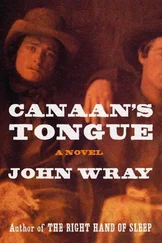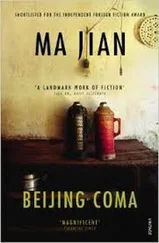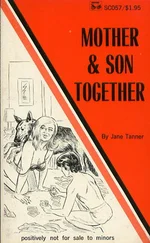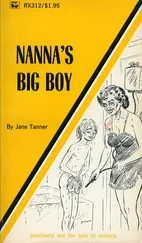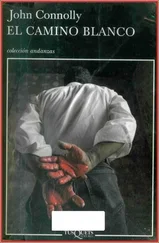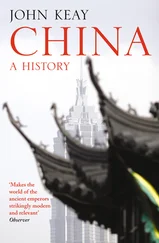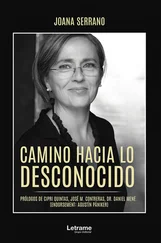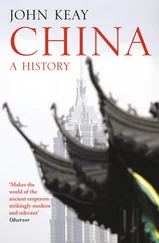At the height of their friendship and doubtless appreciative of Toomer’s dedication of “Kabnis” to him, Frank shepherded the manuscript to Horace Liveright, the co-founder of Boni and Liveright Publishers along with Albert Boni. On January 2, 1923, Frank sent Toomer a telegram informing him that Liveright had accepted Cane for publication. With Liveright as his publisher, Toomer would make his literary debut in splendid modernist company: just a year before, Liveright had published T. S. Eliot’s The Waste Land. In years to come, they would publish the first books of Ernest Hemingway, William Faulkner, Hart Crane, Dorothy Parker, and other bright stars in the firmament of American modernism.
In the months following Frank’s excellent news, Toomer made preparations for his departure from Washington to New York: “I saw that it was very important for me to be in New York.” He would never again live in his native Washington. For the last time, Toomer dutifully made arrangements for the care of his beloved grandmother, who spent her last years with her son Walter and his family. He then boarded a train to New York, and “thus ended the three-year period of death and birth in Washington.” 127Having left New York in the summer of 1920 as an aspiring, unpublished writer, Toomer returned to the nation’s literary capital in the summer of 1923 as a published, respected, and admired author through the sheer force of “will and sweat,” and through the support of McKay and especially Locke, though chiefly through the influence, counsel, and friendship of Frank.
In his recollection of this crucial period in his development as an artist, Toomer conveyed the excitement of his encounters with the major figures of white American modernism that summer: “In New York, I stepped into the literary world. Frank, Gorham Munson, Kenneth Burke, Hart Crane, Matthew Josephson, Mal-com Cowley, Paul Rosenfield, Van Wyck Brooks, Robert Littell— Broom, the Dial, the New Republic and many more. I lived on Gay Street and entered into the swing of it. It was an extraordinary summer…. I met and talked with Alfred Stieglitz and saw his photographs. I was invited here and there.” 128In this recollection, Toomer is describing his pleasure at being introduced into a world populated by the key writers of the Lost Generation and the small, but influential magazines through which they shaped the mainstream of American modernism.
The sometimes overlapping, sometimes separate, other world of writers who contributed to the shape and direction of Afro-American modernism included most influentially Langston Hughes, Zora Neale Hurston, Claude McKay, Countee Cullen, and Sterling A. Brown, among two dozen others, coalescing around the slight, though formidable figure of Locke in his pied-à-terre in Harlem. But Toomer is largely silent about his encounters with them. These writers published in two magazines primarily: Opportunity, the monthly magazine of the Urban League, edited by the enterprising sociologist, Charles S. Johnson, who along with Locke, was one of the two midwives of the Harlem Renaissance; and in Du Bois’s Crisis. Locke’s The New Negro anthology, as we have seen, gave the nascent movement a form and a manifesto. A few other periodicals, such as Fire, the short-lived magazine founded by Hughes, Hurston, and Wallace Thurman, also played a role in shaping the course of the Renaissance, but none had the canonical presence of Crisis and Opportunity.
Perhaps a sign of Toomer’s evolving thoughts about how he would identify himself racially, when he arrived in New York in that heady summer of 1923, is the fact that he did not seek lodging in Harlem but rather in Greenwich Village, sharing an apartment on Grove Street with Gorham Munson after the departure of his roommate Hart Crane. Munson’s hospitality prepared the ground for a lifelong friendship with Toomer. Sometime later, he moved to the black section of the Village, renting a “small row-house apartment on Gay Street…distinctive then as being a predominantly black settlement in an otherwise white part of town.” According to his biographers, “Toomer spent his days in the backyard reading or in the apartment writing. During that summer he was trying to establish himself as a free-lance writer for various New York journals and little magazines.” 129At the end of that summer, Toomer’s long-cherished dream of publishing a book—“I wanted a published book as I wanted nothing else”—became a reality. Liveright brought out Cane in September 1923. 130Much to Toomer’s delight, the reviews were uniformly positive. High praise came from the members of the two literary worlds who regarded him as a member. Comparing Toomer’s debut work with the Frank’s fiction, Robert Littell offered this assessment of Cane in the New Republic : “Toomer’s view is unfamiliar and bafflingly subterranean, the vision of a poet far more than the account of things seen by a novelist — lyric, symbolic, oblique, seldom actual.” 131Allen Tate, a member of the Fugitive Poets, also praised Cane in the pages of Nashville’s Tennessean. Countee Cullen sent Toomer a congratulatory note in which he described Cane as a “classical portrayal of things as they are.” 132A month after the publication of Cane, the critic Edward O’Brien wrote from England requesting permission to reprint “Blood-Burning Moon” in the anthology The Best Short Stories of 1923. 133Du Bois and Locke expressed their admiration for Toomer’s achievement in an essay entitled “The Younger Literary Movement” in 1924 in Crisis. The influential African American critic William Stanley Braithwaite offered high praise of Cane in the pages of The New Negro : “ Cane is a book of gold and bronze, of dusk and fame, of ecstasy and pain, and Jean Toomer is a bright morning star of a new day of the race in literature.” 134Two years later in the summer of 1927, Langston Hughes and Zora Neale Hurston paid homage to Toomer’s artistic achievement by visiting Sparta, the inspiration for Cane, on their return North from a road trip through the South. 135
Reflecting upon Cane’ s reception and impact almost forty years after its publication, Arna Bontemps, a member of the younger generation of writers of the Harlem Renaissance, said this of Toomer’s shaping influence on the forms his black contemporaries and literary heirs would craft: “ Cane ’s influence was by no means limited to the joyous band that included Langston Hughes, Countee Cullen, Eric Walrond, Zora Neale Hurston, Wallace Thurman, Rudolph Fisher and their contemporaries of the Twenties. Subsequent writing by Negroes in the United States, as well as in the West Indies and Africa, has continued to reflect its mood and often its method and, one feels, it has also influenced the writing about Negroes by others. Certainly, no earlier volume of poetry or fiction or both had come close to expressing the ethos of the Negro in the Southern setting as Cane did.” 136While acknowledging his broad influence, Darwin T. Turner maintained that Toomer’s signal contribution to American letters was to reverse years of stereotypical portrayals of rural, southern black language and life: “No matter how he influenced others, it cannot be denied that Jean Toomer was the first writer of the twenties to delineate southern black peasant life perceptively.” 137
Toomer’s deft portrayal of southern black peasantry, his sensitive portrayal of black women, his power as a lyric poet, the manner in which he combined philosophy with fiction, and his exploration of the relationship between region and race directly influenced the shape of Zora Neale Hurston’s Their Eyes Were Watching God , and through her, the theme of Ralph Ellison’s Invisible Man. What’s more, Cane has profoundly influenced both the fictions and the poetry of key African American writers who came of age since its republication in the late 1960s, including Alice Walker, Michael S. Harper, Rita Dove, Charles Johnson, Gloria Naylor, Elizabeth Alexander, and Natasha Trethewey. Though Ernest J. Gaines discovered Cane after he had developed his particular style of writing, he regards Toomer as a fellow artist with whom he shares a commitment to portray realistically the experiences of southern black farmers. Despite his desire to fee it, Toomer’s literary legacy survives primarily because of Cane’ s canonization in the black literary tradition.
Читать дальше



